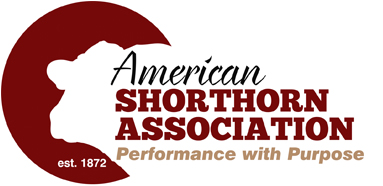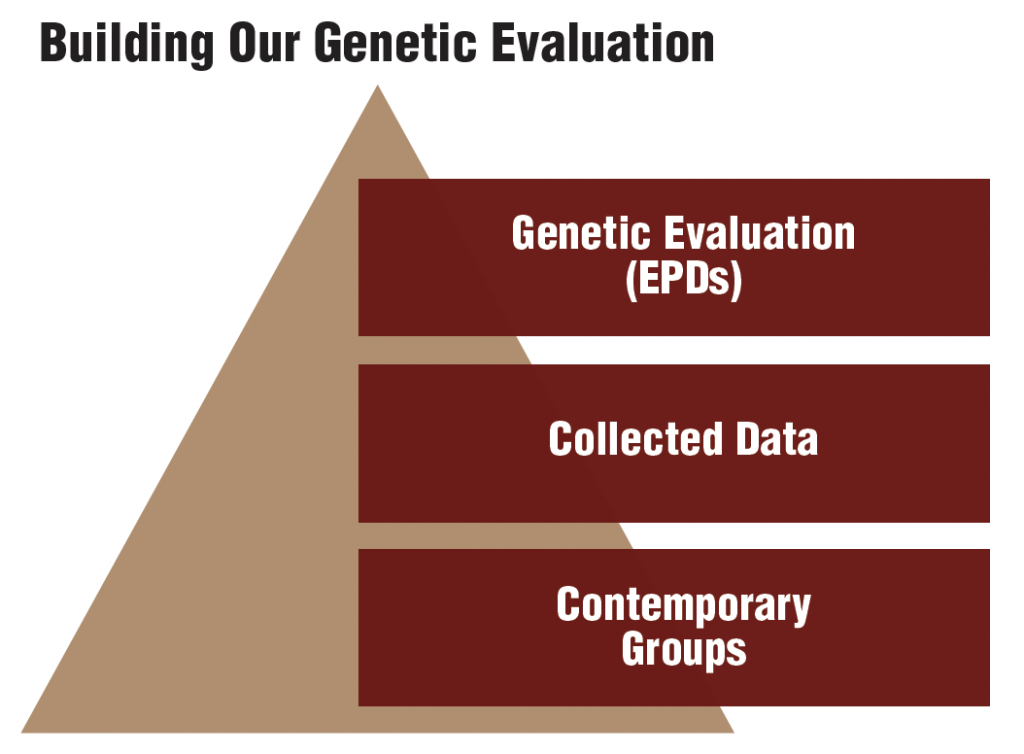See the 2018-2019 Show Region Winners below. The detailed report will be in the May/June issue of Shorthorn Country.
National Shorthorn Show Female of the Year: Steck Chelsie C 704 ET, Riley Johnson, Jackson, MN.
National Shorthorn Show Bull of the Year: TJH Bo’s Maxim H7, Crow Creek Farms, Lawton, OK.
National ShorthornPlus Show Female of the Year: SULL Black Cherri 7217E ET, Jake Brandt, Clarion, IA.
National ShorthornPlus Show Bull of the Year: CCF Nicholas C59E, Crow Creek Farms, Lawton, OK.
Northeast Region Winners:
Shorthorn Female of the Year: CF V8 Mona Lisa Reward 782 SOL ET, Ryan Wickard, Wilkinson, IN.
Shorthorn Female Runner-Up: Midnight Madison 716, Annette Braun, Mechanicsville, MD.
Shorthorn Female Division Winners:
Early Spring Heifer Calf Champion- HAA Fantasies Halo ET, Todd DeGasperi
Senior Heifer Calf Champion- SULL Myrtle 7655E ET, April Troyer
Senior Heifer Calf Reserve Champion- M&L Misty’s Deception 1217, Landon Helmke
Intermediate Champion Female- Midnight Madison 716. Annette Braun
Intermediate Reserve Champion Female- Don Amber 520 ET, April Troyer
Junior Champion Female- CF V8 Mona Lisa Reward SOL ET, Ryan Wickard
Junior Reserve Champion Female- Armstron Queen 1704 ET, Benjamin Allen
Senior Champion Female- SULL Rose’s Legacy 7102E ET, Kolten DeGasperi
Senior Reserve Champion Female- SS Ocean Mirage 714 ET, Marsch Show Cattle
Shorthorn Bull of the Year- Armstrong Easy Rider 1603, John M. Allen, IV, Saxonburg, PA.
Shorthorn Bull Runner-Up- GLF Spirit Fusion, Henry Dodrer, Jr., Westminster, MD.
Shorthorn Bull Division Winners:
Senior Bull Calf Champion- GLF Spirit Fusion, Henry Dodrer, Jr.
Junior Champion Bull- MVF Hot Rod, Masonic Village Farm
Senior Champion Bull- Armstrong Easy Rider 1603, John M. Allen, IV
ShorthornPlus Female of the Year- HAA Ebony, Kolten DeGasperi, Westminster, MD.
ShorthornPlus Female Runner-Up- Burgess Red Ivy 27017 ET, Annette Braun, Mechanicsville, MD.
ShorthornPlus Division Winners:
Junior Champion Female- HAA Ebony, Kolten DeGasperi
Junior Reserve Champion Female- Burgess Red Ivy 27017 ET, Annette Braun
ShorthornPlus Bull of the Year- Harmony White Storm, Annette Braun, Mechanicsville, MD.
Junior Bull Calf Champion- Harmony White Storm, Annette Braun
Southeast Region Winners:
Shorthorn Female of the Year: GCC Evolution Charm 7102 ET, Kolten Greenhorn, Bellbrook, OH.
Shorthorn Female Runner-Up: RFSS Roan Margie ET, Evea Ennis, Martinsville, IN.
Shorthorn Female Division Winners:
Early Spring Heifer Calf Champion- CF TF No Foolin 897 UR X ET, Camryn Clapp
Early Spring Heifer Calf Res. Champion- Bratcher Myrtle Bo 812 ET, Craig Bratcher
Junior Heifer Calf Champion- GAF Miss Sassy 2518, Jake Ozburn
Junior Heifer Calf Reserve Champion- Martindell Dreams 801, Austin Martin
Senior Heifer Calf Champion- Martindell Lily 787, Austin Martin
Intermediate Champion Female- GCC Evolution Charm 7102 ET, Kolten Greenhorn
Intermediate Reserve Champion Female- RFSS Roan Margie ET, Evea Ennis
Junior Champion Female- VSC Fancy Margie 60, Mitch Williams
Senior Champion Female- RFSS Roan Sis, Mattie Williams
Senior Reserve Champion Female- VSC Destiny Best Asset 57, Molly Williams
Shorthorn Bull of the Year- EGL Neptune MX 759, Evea Ennis, Martinsville, IN.
Shorthorn Bull Runner-Up- Armstrong Easy Rider 1603, John M. Allen, IV, Saxonburg, PA.
Shorthorn Bull Division Winners:
Early Spring Bull Calf Champion- VVCC Rocky, Valley Vista Farms
Early Spring Bull Calf Res. Champion- DFF Revolution, Lanie Sutherland
Junior Bull Calf Champion- White Lightning 21MV ET, Cheyenne Cattle Company
Senior Bull Calf Champion- EGL Neptune MX 759, Evea Ennis
Senior Bull Calf Reserve Champion- MFK Last Dance 387K X, Maurice & Faye Korthaus
Intermediate Champion Bull- VCC Ain’t No Foolin’ 1701 ET, Vollborn Cattle Company & Cedar Lane Farm
Senior Champion Bull- Armstrong Easy Rider 1603, John M. Allen, IV
Senior Reserve Champion Bull- MFK Hot Rebel 26K X, Wesley Maurice Korthaus
ShorthornPlus Female of the Year- 4D Mae Lynn D21E, Rachel Drumm, Winchester, KY.
ShorthornPlus Female Runner-Up- Martindell Lily 839, Austin Martin, Tompkinsville, KY.
ShorthornPlus Division Winners:
Junior Heifer Calf Champion- Martindell Lily 839, Austin Martin
Intermediate Champion Female- Circle J Mabel 005E, Austin Martin
Junior Champion Female- SharBen Lil Miss Can’t Be Wrong, Adymae Williams
Senior Champion Female- 4D Mae Lynn D21E, Rachel Drumm
North Central Region Winners:
Shorthorn Female of the Year: DSF Esther 4F, Nathan Studer & Jenny Sruder, Creston, IA.
Shorthorn Female Runner-Up: Bergs Sweet Katie, Madeline Berg, Osage, IA.
Shorthorn Female Division Winners:
Early Spring Heifer Calf Champion- DVW 24 Roses 318, Wasinger Cattle Company
Junior Heifer Calf Champion- DSF Esther 4F, Nathan Studer & Jenny Studer
Junior Heifer Calf Res. Champion- Bergs Crystal’s Sally, Lauren Berg
Senior Heifer Calf Champion- Homedale June Rosewood 7806, Samantha Jo Jabs
Senior Heifer Calf Res. Champion- Homedale June Rosewood 7789, Lane Thomas Jabs
Intermediate Champion Female- Bergs Sweet Katie, Madeline Berg
Intermediate Res. Champion Female- Homedale MLS Max Rosa 7790, Elizabeth Jabs
Junior Champion Female- DSF Missie 104E, Rose Family
Senior Champion Female- DSF Sonya 11E, Brock David Studer
Shorthorn Bull of the Year: JS Continental Divide, Blake Lehman, Eureka, IL & James R. Johnson, Niantic, IL.
Shorthorn Bull Runner-Up: 6B’s Guardian ET, 6B Farms, Allison, IA.
Shorthorn Bull Division Winners:
Early Spring Bull Calf Champion- Bergs Red Duke, Madeline Berg
Early Spring Bull Calf Res. Champion- Studer’s Forsyth 65F. Nathan Studer & Jenny Studer
Junior Bull Calf Champion- Studer’s Fairgame 6F, Brock David Studer
Junior Champion Bull- JS Continental Divide, Blake Lehman & James R. Johnson
Senior Champion Bull- 6B’s Guardian ET, 6B Farms
ShorthornPlus Female of the Year- SULL Black Cherri 7217E ET, Jake Brandt, Clarion, IA.
ShorthornPlus Female Runner-Up- WGR Midnight Mirgage 708E, Mikayla Wetzel, Faribault, MN.
ShorthornPlus Division Winners:
Junior Heifer Calf Champion- 6B Nan 18, 6B Farms
Intermediate Champion Female- WGR Midnight Mirgage 708E, Mikayla Wetzel
Junior Champion Female- SULL Black Cherri 7217E ET, Jake Brandt
South Central Region Winners:
Shorthorn Female of the Year: SULL Lucy 7686E ET, Dayson Cash, Fay, OK.
Shorthorn Female Runner-Up: RSF Simply Dessert Rose 3E, Ryan Lane, Siloam Springs, AR.
Shorthorn Female Division Winners:
Late Spring Heifer Calf Champion- 2GS Cumberland 523F, Garrison Spooner
Early Spring Heifer Calf Champion- M&E Mary’s Cumberland 952, M & E Shorthorns
Early Spring Heifer Calf Res. Champion- JVCC Miss Margie, Luke Jones
Junior Heifer Calf Champion- LDB Magic Rain 801 ET, Brittany Blankinship
Junior Heifer Calf Res. Champion- M&E Cumberland 948, M & E Shorthorns
Senior Heifer Calf Champion- SULL Lucy 7686E ET, Dayson Cash
Senior Heifer Calf Res. Champion- WHR Queen of Sonny 7N15 ET, Carolyn Norris
Intermediate Champion Female- RSF Simply Dessert Rose 3E, Ryan Lane
Intermediate Res. Champion Female- AF Lassies Rose 1725, Merideth Behrens
Junior Champion Female- Simple Brilliance, Lane Blankinship
Junior Res. Champion Female- LH Dee Licious 0317, L H Show Cattle
Senior Champion Female- DTR Mona Lisa 701E, Josie Heter
Senior Res. Champion Female- TRN Foxxy 687 ET, Graham Spooner
Shorthorn Bull of the Year: TJH Bo’s Maxim H7, Crow Creek Farms, Lawton, OK.
Shorthorn Bull Runner-Up: Fieser’s Mr. Impact 517, Dayson Cash, Fay, OK & Fieser’s Polled Shorthorns, Plains, KS.
Shorthorn Bull Division Winners:
Early Spring Bull Calf Champion- DCL Margie’s Swagger, Dayson Cash
Junior Bull Calf Champion- J&M Maxim Silver ET, J & M Shorthorns
Senior Bull Calf Champion- Fieser’s Ranger, Cash-Farms Shorthorns
Senior Bull Calf Reserve Champion- K’s Zepplin 717, L H Show Cattle
Intermediate Champion Bull- Fieser’s Rookie, Cash-Farms Shorthorns
Junior Champion Bull- Fieser’s Mr. Impact 517, Dayson Cash & Fieser’s Polled Shorthorns
Senior Champion Bull- TJH Bo’s Maxim H7, Crow Creek Farms
ShorthornPlus Female of the Year: JVCC Red Diamond 701, Kadin Kinder Worthington, El Reno, OK.
ShorthornPlus Female Runner-Up: Miss Star Knite, Kadin Kinder Worthington, El Reno, OK.
ShorthornPlus Division Winners:
Early Spring Heifer Calf- Ms. Annie, Ashlyn Larman
Junior Heifer Calf Champion- LDB Cowgirl’s Phoebe 805, Lane Blankinship
Junior Heifer Calf Res. Champion- CCF Violet C01F, Buck Downum
Senior Heifer Calf Champion- AJC Classy Stella, AJ Show Cattle
Senior Heifer Calf Res. Champion- LDB Reckless Mulan 803, Lane Blankinship
Intermediate Champion Female- Miss Star Knite, Kadin Kinder Worthington
Intermediate Res. Champion Female- DTR Ruby Rock Candy 758E, Josie Heter
Junior Champion Female- JVCC Red Diamond 701, Kadin Kinder Worthington
Junior Res. Champion Female- Ms. Laney, Ashlyn Larman
Senior Champion Female- CCR Pepper, Madyson Nunn
ShorthornPlus Bull of the Year: CCF Nicholas C59E, Crow Creek Farms, Lawton, OK.
ShorthornPlus Bull Runner-Up (TIE): FSC Mr. Fireball, Brett Forgy, Caddo, OK
CRC Little Boy Blue 12D, TSW Cattle, Marlow, OK
Early Spring Bull Calf Champion- FSC Mr. Fireball, Brett Forgy
Junior Bull Calf Champion- CCF Paxton C14F, Crow Creek Farms
Senior Bull Calf Champion- CCF Nicholas C59E, Crow Creek Farms
Senior Champion Bull- CRC Little Boy Blue 12D, TSW Cattle
West Region Winners:
Shorthorn Female of the Year: LC Augusta Pat 2728, Catherine Heather, Sanger, CA
Shorthorn Female Runner-Up: LC Augusta Pat 2817, Don Cardey, Turlock, CA
Shorthorn Female Division Winners:
Early Spring Heifer Calf Champion- LC Augusta Pat 2817, Don Cardey
Junior Heifer Calf Champion- LC Augusta Pat 2728, Catherine Heather
Junior Heifer Calf Res. Champion- LC Welcome Lady 2704, Don Cardey
Senior Heifer Calf Champion- JT Betty Angel 2564, J T Ranch
Senior Heifer Calf Res. Champion- LC Augusta Pat 2667, Don Cardey
Intermediate Champion Female- GSC Rosie Ransom 2503, Greg Cardey
Intermediate Reserve Champion Female- JT Betty Angel 2472, J T Ranch
Junior Champion Female- LC Augusta Pat 2385, Don Cardey
Junior Reserve Champion Female- JT Betty Angel 2334, J T Ranch
Senior Champion Female- GSC Princess 2222, Greg Cardey
Senior Reserve Champion Female- LC Funny Face 2300, Don Cardey
Cow/Calf Champion- GSC Sweetheart 1311, Greg Cardey
Reserve Cow/Calf Champion- LC Augusta Pat 1383, Don Cardey
Shorthorn Bull of the Year: GSC Studer 2259, Greg Cardey, Turlock, CA.
Shorthorn Bull Runner-Up: GSC Gold Label 2148, Greg Cardey, Turlock, CA.
Shorthorn Bull Division Winners:
Early Spring Bull Calf Champion- GSC Studer 2865, Greg Cardey
Junior Bull Calf Champion- LC Gold Label 2685, Don Cardey
Junior Bull Calf Res. Champion- JT Studer 2725, J T Ranch
Senior Bull Calf Champion- GSC Gold Label 2585, Greg Cardey
Senior Bull Calf Res. Champion- LC Studer 2563, Don Cardey
Intermediate Champion Bull- LC Studer 2464, Don Cardey
Intermediate Res. Champion Bull- GSC Studer 2419, Greg Cardey
Junior Champion Bull- GSC Studer 2259, Greg Cardey
Junior Reserve Champion Bull- LC Gold Label 2263, Don Cardey
Senior Champion Bull- GSC Gold Label 2148, Greg Cardey
ShorthornPlus Female of the Year: PHF Idaho Duchess 294E, Arielle Phillips, Caldwell, ID
Intermediate Champion Female- PHF Idaho Duchess 294E, Arielle Phillips





![[ Random Image ]](/wp-content/themes/shorthorn/headers/header1.jpg)

